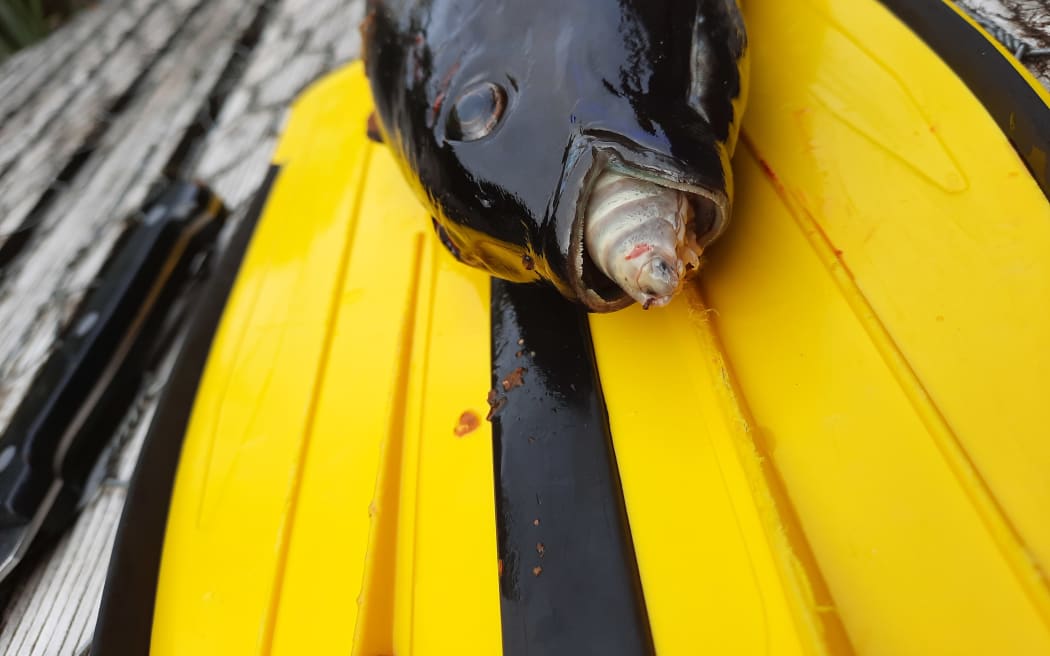The Afternoons programme’s Critter of the Week last Friday featured the tongue louse (Cymothoidae species), but it’s surprisingly been suggested it may be an unrecorded new species.
The parasite is found in several different fish species in New Zealand, peering out of their mouths with beady eyes.

Photo: Guy McDonald, used with permission
“It’s an isopod which is the same group that slaters belong to … but quite larger, about an inch long,” zoologist Mike Dickison says of the creature.
In fact, there are hundreds of marine isopod species and a lot of them are parasites on fishes, he says.
“The one we were talking about has a particular habit of finding its way into the mouth of the fish through the gills, and latching onto its tongue and severing it and basically replacing the fish’s tongue with itself.
“It sits there snug inside the mouth of the fish, watching all the food stream past, being a happy little louse, until such time it needs to breed.
“So fishermen sometimes find these things when they catch a fish and out pops through the fish’s mouth the head of this little slater thing with two wee eyes, which I think is actually quite cute, but probably not everyone agrees with me.”
The photos of the critter had already garnered reactions online after Dickison posted pictures of it on his social media.
“People were just so disgusted. I had to end a little set of photos with a picture of a nice cat. .”
But Dickison, who volunteers each week to add information about the critters featured on Afternoons to Wikipedia, says he couldn’t find records of isopods in butterfish specifically.
“There had been a few papers published about the species in Australia and South Africa but nothing really in New Zealand.”
So he emailed parasitologist Dr Melissa Martin, who did her PhD work in Australia and is an expert on tongue-biting isopods.
“She got back to me straight away, with a detailed response, because I’d mentioned these species were found on gurnards and trevally and snapper and the photos of this one on the butterfish.
“She was able to sort me out the species that live on gurnards, trevally and snapper … but the butterfish one, she said ‘ah no, that’s probably an accidental one, it’s probably been living on something else’.”
It was baffling for Dickison who was aware from several experts and fishers that these isopods were commonly being seen in butterfish in New Zealand.
“This didn’t seem to be accidental, so I sent her the photographs.
“You really need to get them under a microscope to tell them apart properly but just from her look at it, she said to me the photos aren’t bad but she couldn’t identify it, she really needs to see it up-close, but it looks to her like a new species and that’s pretty exciting.”
Dickison says he will ask the photographer, who snapped up the isopod on the fish, to preserve a couple next time for experts so they can observe it more closely to determine whether it really is a new species.
“The thing is, of course, these things were probably being caught by fishers for years and years … everyone’s known about them but no one has really had a strong enough stomach to look at them really closely and decide, is this really distinct from the ones that are on trevally?”
Although, he believes it’s not uncommon to find undescribed species in less frequented parts of the world.
“Where people are fishing or where there’s a commercial fishery, those species are probably well understood but there’s probably undescribed species of these guys all around New Zealand, the Southern Ocean and no one has really looked.”

